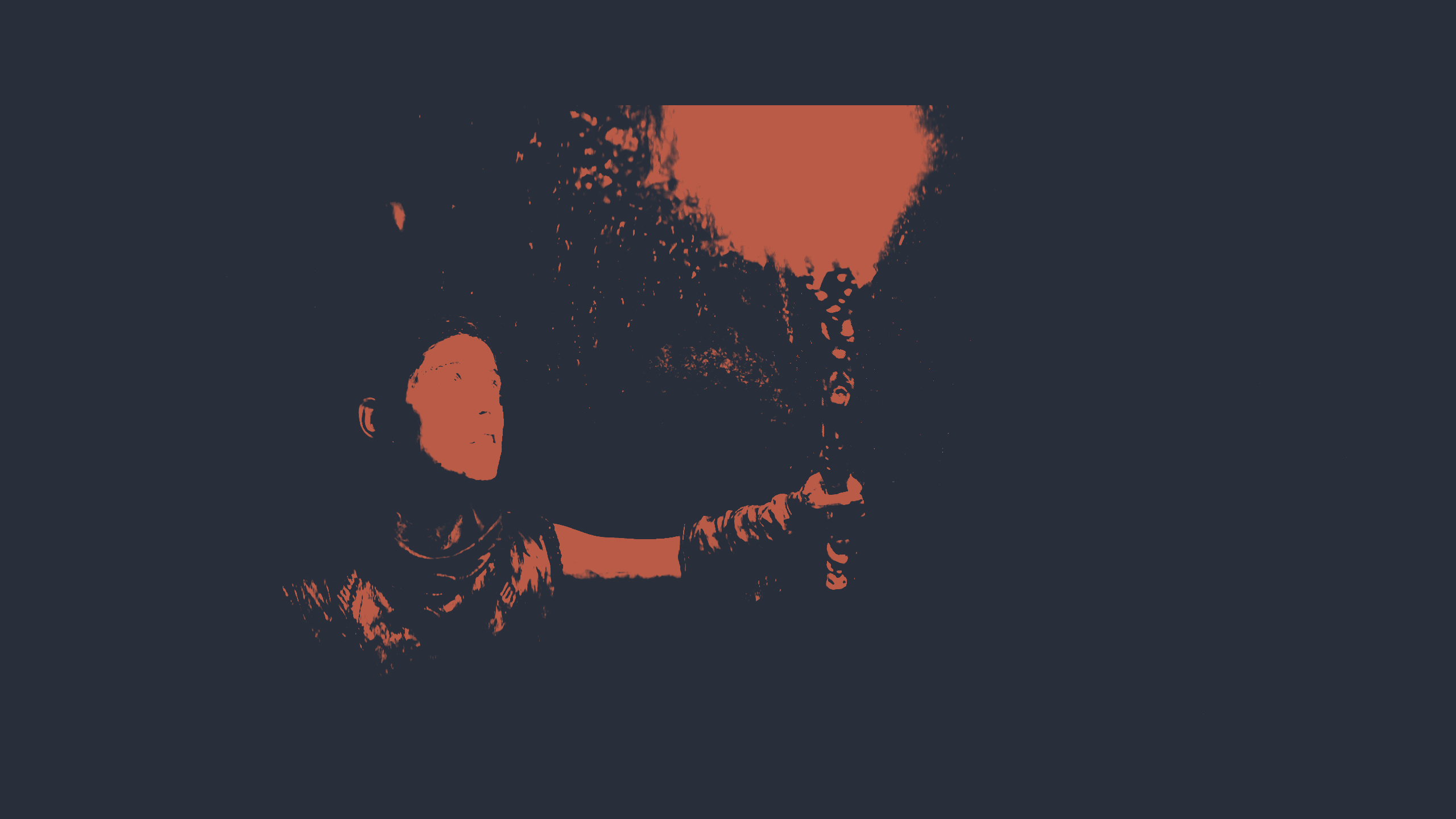
The summary of the first Hellblade that opens Senua’s Saga: Hellblade II emphasises Senua’s repeated isolation. Having inherited psychosis from her mother and dealing with an abusive father, Senua closed herself off from the world until she met her lover, Dillion. But, blamed for a plague that struck her village, she retreated once again, and so avoided the Viking massacre that destroyed it and killed Dillon. From then, she’s alone but for the voices she hears and the head of her lover that she carries with her.
But Hellblade II opens with Senua surrounded by people. Deliberately captured as a slave, her journey this time aims to protect anyone else from going through the raids that killed everybody she knew. What she finds when she washes up in the game’s opening shipwreck is a world full of people with their own world-threatening struggles. The slavers’ land is blighted by famine and giants that stalk the night—a night that’s about to become months long.
Senua pivots not only to helping the locals despite what they’ve done to her and her family, but to helping the giants, who turn out to be manifestations of trauma in their own right. For example, the first (and by far the most effective), Illtauga, lost a child, and by returning its bones Senua is able to put her to rest.
The game focuses on Senua’s full acceptance of her psychosis, and the acceptance of those around her—this acceptance aids her ability to communicate with the supernatural, a move that’s landed for some but not others, specifically Yussef in an earlier essay in this issue. I am personally sensitive to the idea that “this suffering will be of use to you someday,” as Yussef quotes from The Collected Schizophrenias author Esme Wang. When I had cancer I had to sit down with my mother and get out ahead of a few things I knew she would say otherwise: don’t tell me a positive outlook will fix this, don’t tell me to pray, and don’t say this happened for a reason.
But where I found an unexpected sense of hope in Hellblade II wasn’t in its portrayal of psychosis one way or the other, but in how it chooses to show Senua’s response to the undeniable traumas she’s endured: her abusive father, isolation from her community, and the destruction of her village.
I think often about the study that found that people who had been in distressing situations were less empathetic to those currently going through the same thing. And Senua in particular has every reason not to show any kindness to many of the people she encounters, some of whom directly tried to enslave her or are monsters that kill and eat humans. But she does anyway.
Senua consistently makes the choice to help other people (and giants), even though she’s given easier paths. In doing so, she’s cast in direct opposition to almost everyone else in the game. The slavers are capturing human sacrifices in an attempt to appease the giants, which came from a catastrophic volcanic eruption. Thórgestr, the head of the raiding group that captured Senua, is the son of the village leader but doesn’t feel able to rock the boat with his father. The giants themselves, although treated with varying levels of sympathy by the narrative, are essentially destructive beings at their core because of what happened to them.
It’s not that Senua doesn’t struggle with what she’s been through. She agonises over whether and how to tell parts of her story to Ástríðr, a later game character, ultimately sharing the parts which are relevant without spilling out every detail. Given that the game is called Senua’s Saga, it’s how Senua tells and (doesn’t tell) the story of what’s happened to her that ends up being both crucial and nuanced.
As someone who didn’t play the first Hellblade, I have the broad strokes of what happened but not the gritty details, and it would be less than that without the convenient catch up at the beginning, something which the characters interacting with Senua obviously don’t get. But her past is not excised for this new tale. It informs her present without being “of use” to her.
For years after my medical trauma I struggled to communicate with people; not just about it specifically but in general. I felt like there was a snarling black dog that was invisible to everybody but me, and I would want to warn people about it, to describe it in perfect detail, but I both couldn’t speak about it and did not want people to know. More recently, I’ve been able to approach it obliquely but meaningfully: ‘well, there’s this thing with teeth.’ The specifics are no longer consuming. Everybody has their own thing with teeth.
Senua approaches other peoples’ ‘things’ with compassion, neither because of or despite the things she has of her own. It’s because she wants to, and in spite of the easier paths.
***
Jay Castello is a freelance writer, editor, and podcaster. If they're not down a research rabbit hole you'll probably find them taking bad photos near a riverbank or old tree. You can find them on Twitter and Bluesky.